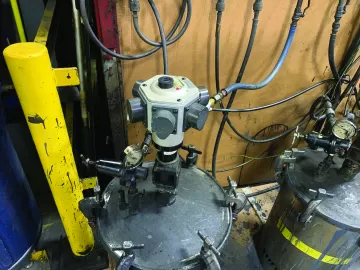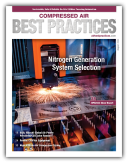Metals

Vane motors can run at much higher speeds (2000 rpm and up), but piston motors tend to turn much slower – less than 1000 rpm. For slower speed applications, vane motors are mated with a gear reducer and called a gearmotor. The gearmotor can produce the higher torque and slower speed needed for some applications, but the gear reducer can add some drivetrain loss. While a piston air motor may not be able to replace a vane motor where high speed is needed, it can be a good choice for high torque/low speed applications.
[ Read Full Story ]
Air Compressor Control Lessons Learned at Metal Products Company
[ Read Full Story ]
DOE Better Plants Partners Get Serious About Compressed Air Systems
[ Read Full Story ]
Metal Fabricator Measures Nitrogen Use, Receives a Surprise
[ Read Full Story ]
Compressed Air Supports Growth at Roush Yates Manufacturing Solutions
[ Read Full Story ]
Re-engineered Compressed Air System Scores Perfect “10” at PC Forge
[ Read Full Story ]
IUE-CWA Labor Union Members Embrace Energy Treasure Hunts
[ Read Full Story ]
How to Keep Reverse Pulse Dust Collectors Operating Efficiently and Reliably
[ Read Full Story ]
Outsourcing Compressed Air Gives GKN Sintered Metals Peace of Mind
[ Read Full Story ]
Capital & Maintenance Cost Avoidance When Metal Grinding Loads Rise
[ Read Full Story ]



